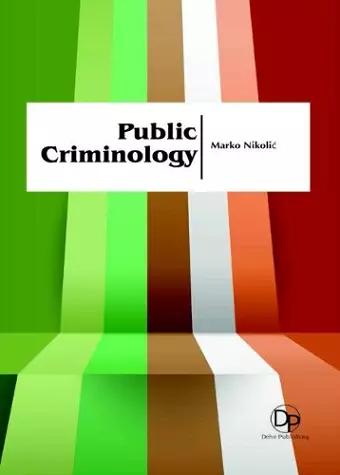Public Criminology
Format:Hardback
Publisher:Delve Publishing
Published:30th Nov '16
Should be back in stock very soon

Some scholars use the plural term public criminologies to indicate that there are multiple publics and many possible interpreta¬tions of how to bridge the gap between academic criminology and public discourse. Those with the interests and skills to carry criminological theories and research into the public debate offer an important service. They may debunk myths and help to reframe the cultural image of the criminal, they may offer social facts on crime and punishment and bring context to highly sensationalized cases, they may work with communities to compile data and answer pressing questions, and they may bring the best available evidence to conversations and debate on issues of criminal justice public policy. Meaning of the research to larger publics, it seeks to narrow the yawning gap between public perceptions and the best available scientific evidence on issues of public concern.
We’ll start with a pessimistic view. Of course we should make closer connection between science and public, but can we rely on data gathered from public sources? Chapter 1 is there to warn people to be careful when interpreting acts of others. In second Chapter children participated in a mock courtroom experiment, in which they were asked to recount either a true or fabricated event. Detection rates were above chance for truth (65.00%) and below chance for lies (45.00%). Chapter 3 begins by examining the historical and institutional factors that have contributed to the continuing subjugation of Indigenous knowledges and meth¬odologies. A discussion of the connections between the hegemony of Western science, the construction of race, and the colonial project follows. This chapter is in this book because of the importance of methodologies conceived in other parts of the world, to get closer to the general public and population, we must respect scientific achievements from places they originated from. Imagi¬native criminology engages substantively and theoretically with cultural artefacts such as film, fiction, music, dance, art, photog¬raphy and cultural institutions. Imaginative criminology movement offers a challenge to an orthodox criminology that is guided by the coercive and constraining bureaucratic categories of criminal justice administration and the criminal law, making it closer to the public. Chapter 5 reports examples of qualitative studies (from ethnography, hermeneutical sociology of knowledge, ethnomethodology/conversation analysis, discourse analysis and narrative analysis) especially...
ISBN: 9781680957884
Dimensions: unknown
Weight: unknown
220 pages